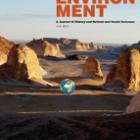Goodsite, Michael, Catherine Wong Mei Ling, Ole Hertel, and Lars Moseholm. “Responses to Air Pollution Based on Historical and Current Policies in the EU and ASEAN.” Global Environment 6 (2011): 150–82. Republished by the Environment & Society Portal, Multimedia Library. http://www.environmentandsociety.org/node/7556.
This review was undertaken as part of the ISDP and ISEAS sponsored initiative: Regional Cooperation in Environmental Protection: Lessons from Two Regions (EU and ASEAN). We examined the cases of the EU and ASEAN policies for the protection of air quality from a scientific practitioner’s point of view. We seek to ascertain if ASEAN can respond to regional human-induced environmental problems given existing problems of national sovereignty and the interest-based character of ASEAN-type associations, since ASEAN’s goal, in contrast to that of the EU, has been regional cooperation rather than regional integration. Both regions are responding differently to climate change and the global economic and environmental realities resulting from, or arising in reaction to, their policies (or lack thereof). While the EU and ASEAN can and should learn from one another and their relations have been the subject of studies […], there are still challenges to be addressed to effectively drive improvement of critical regional (air) pollution issues that may ultimately impact health and productivity. Each regional organization has in its own manner made exemplary efforts towards resolving environmental degradation within its own region and taken efforts to make a positive international impact, but there is still the need for international treaties and more local efforts to empower the regional visions. Our aim is to highlight the status of the respective policy frameworks and exemplify areas in which we can learn from one another in the field of air pollution, given its global relevance for climate change. We conclude by suggesting a strategic summary framework for future action. This paper is not meant to be a history of either EU or ASEAN policy; for this, the reader is referred instead to appropriate literature, most notably the EU Environmental Policy Handbook, especially the air quality chapter (3) with excellent background information on European Atmospheric Environment Policy.
— Text from The White Horse Press website
All rights reserved. Made available on the Environment & Society Portal for nonprofit educational purposes only, courtesy of Michael Goodsite, Catherine Wong Mei Ling, Ole Hertel, Lars Moseholm, and XL edizioni.


